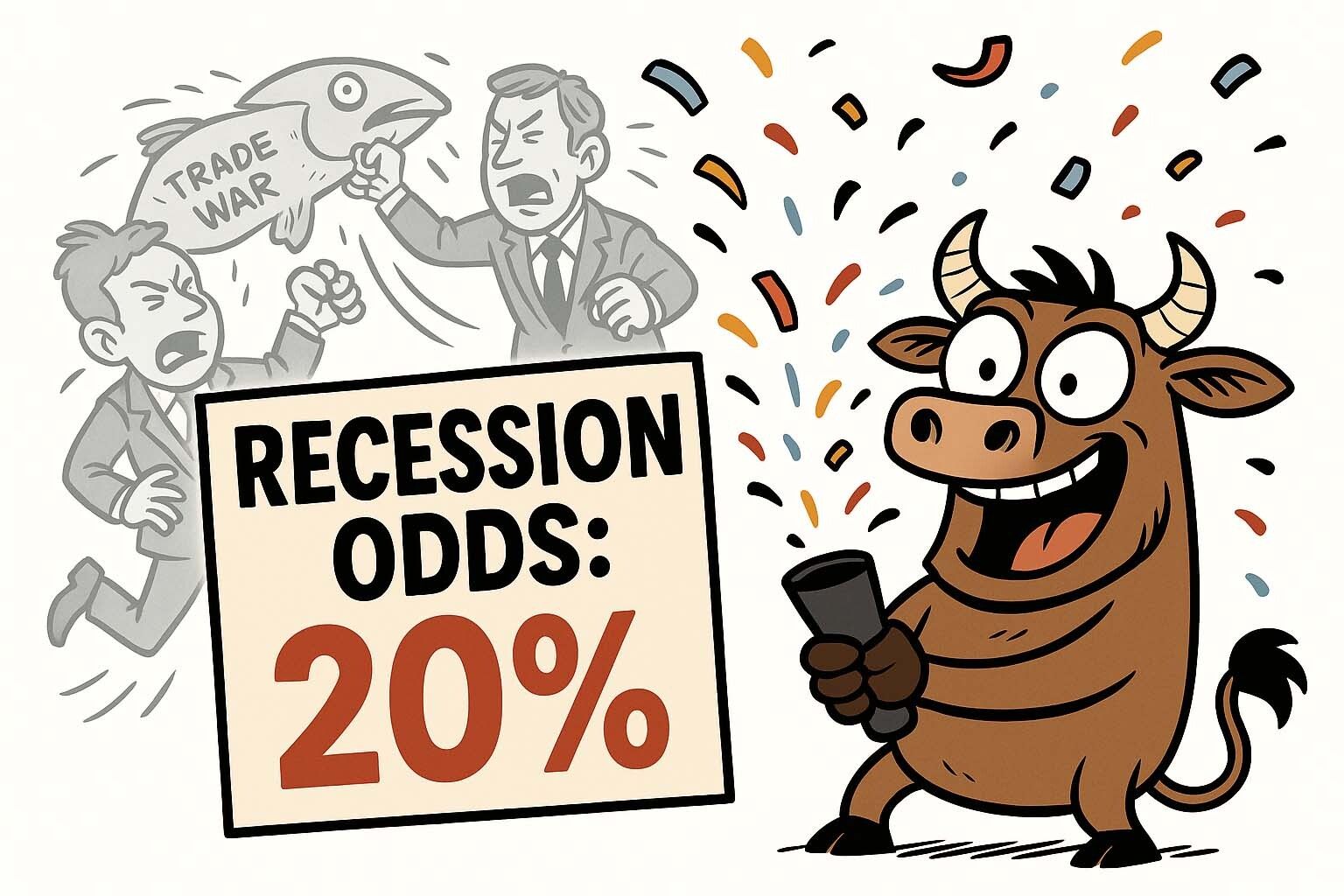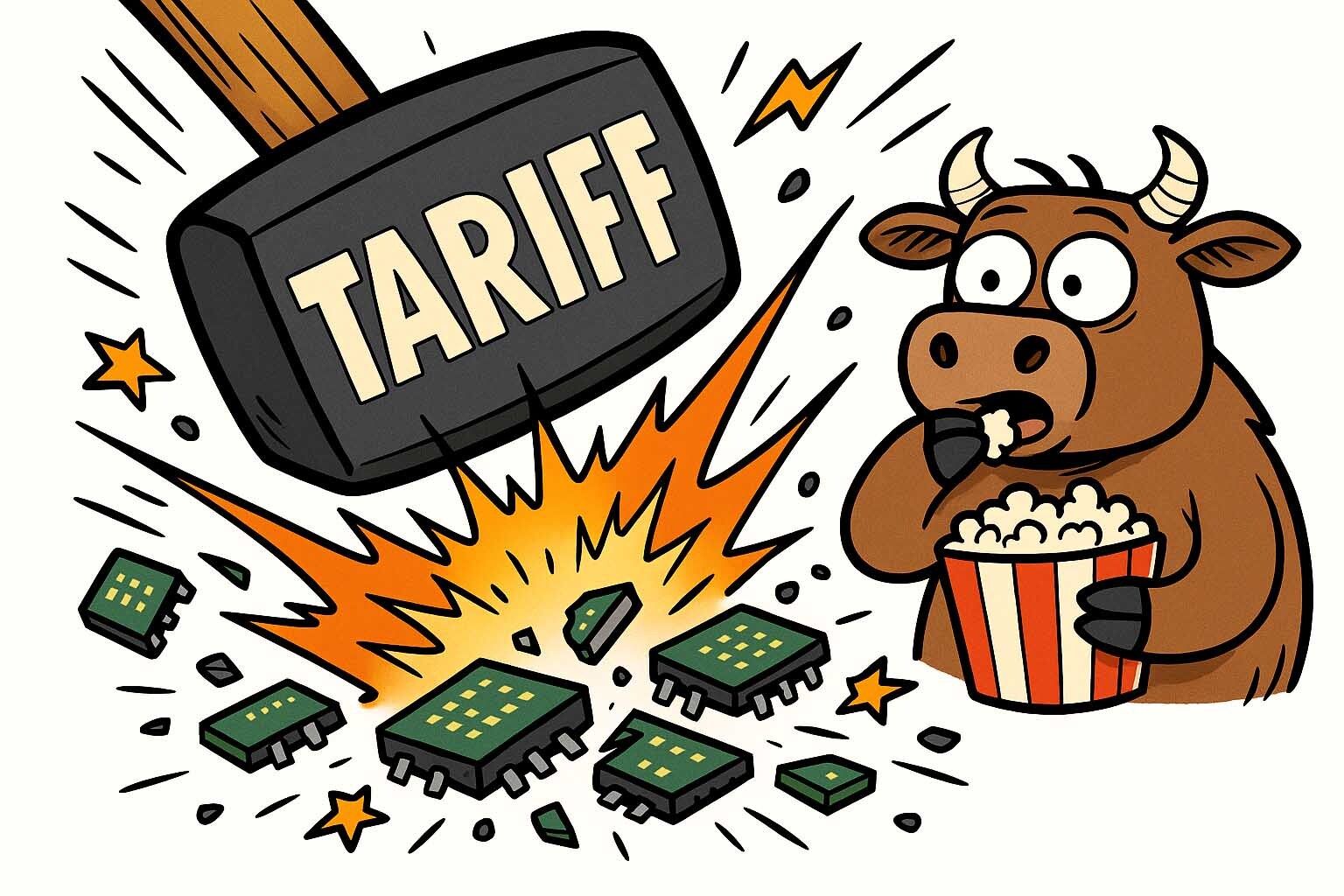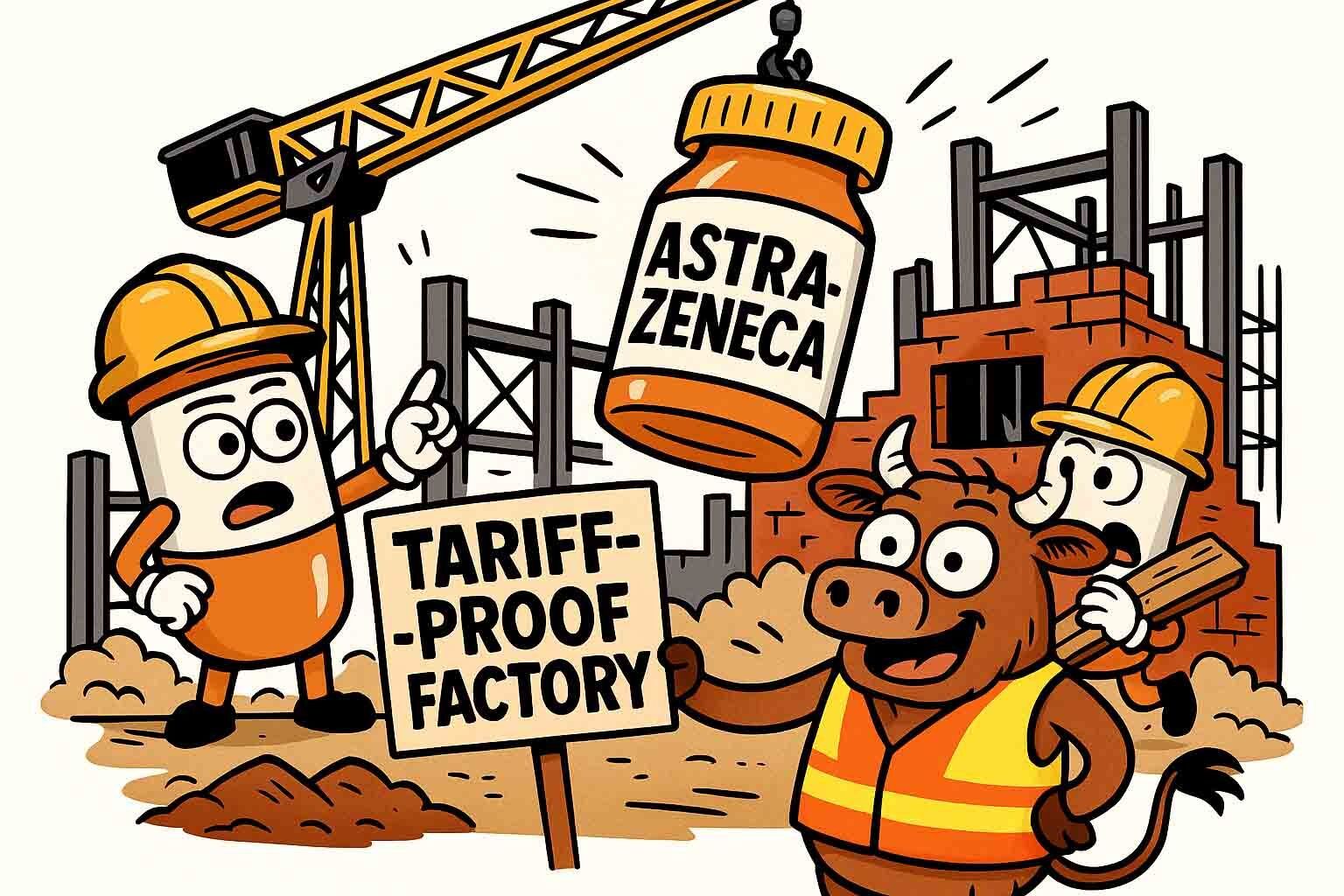In today’s post:
The Numbers Don’t Add Up 🤯
This Policy Could Break Tech 🫢
Trump’s $220B Pharma Meltdown 🔥
Daily Bull Run Premium+ Analysis

Tired of newsletters vanishing into Gmail’s promotion tab — or worse, being buried under ad spam?
Proton Mail keeps your subscriptions organized without tracking or filtering tricks. No hidden tabs. No data profiling. Just the content you signed up for, delivered where you can actually read it.
Built for privacy and clarity, Proton Mail is a better inbox for newsletter lovers and information seekers alike.

THE NUMBERS DON’T ADD UP 🤯
The economy is acting like that one friend who says they’re broke but somehow shows up with a brand-new iPhone 17. The numbers just don’t line up.
Fresh GDP data shows the US economy grew 3.8% in the summer quarter. That’s some strong expansion. At the same time, nonfarm payrolls are cooling. Hiring has slowed down and job creation looks weak.
Torsten Slok, chief economist at Apollo Global Management, called it out: “The economy cannot be on the brink of a recession with a weaker labor market, and at the same time accelerating with stronger GDP growth.”
So what’s he really saying? One of these numbers is lying to us.
What’s Really Going On
Slok thinks the answer is structural shifts. Two big factors:
AI is quietly replacing human work across industries. Companies can grow without needing to hire as much.
Lower immigration means there are fewer available workers, so job creation naturally looks slower.
At the same time, one old headache is fading away. The drag from the trade war that hammered growth in recent years is easing. That helps explain why the economy looks stronger than the labor data suggests.
So Are We Safe?

Apollo cut its 12-month recession odds down to 20%. That’s basically economists saying, “Yeah, we’re worried, but not losing sleep.”
But there’s still a problem. Inflation is running at 2.9% and edging higher. That makes it harder to argue for more rate cuts from the Federal Reserve. Growth and inflation are pulling in opposite directions, and policymakers are stuck in the middle trying not to break anything.
TL;DR
GDP grew 3.8% last quarter while hiring cooled.
Apollo’s Torsten Slok says AI and low immigration explain the disconnect.
Trade war drag is fading and recession risk is down to 20%.
Inflation is at 2.9% and rising which makes Fed rate cuts less likely.

1. Ride AI Productivity Plays
AI adoption is boosting output without hiring more workers. Companies that integrate AI efficiently could see margin expansion.
📌 Action: Accumulate shares in AI infrastructure leaders like $MSFT ( ▲ 0.48% ) or $NVDA ( ▼ 0.53% ) as long-term holds. Focus on firms monetizing AI, not just hyping it.
2. Bet on Immigration-Exposed Sectors
Lower immigration = tighter labor supply. That benefits companies with automation, hurts those reliant on low-wage labor.
📌 Action: Favor industrial automation ETFs like $ROBO ( ▲ 0.88% ). Avoid overexposure to labor-heavy sectors like agriculture or hospitality.
3. Position for “Higher-for-Longer” Rates
With inflation at 2.9% and climbing, rate cuts are unlikely. Income plays with solid cash flow become more attractive.
📌 Action: Build exposure to short-duration Treasuries via $SHY ( ▼ 0.04% ) or dividend aristocrats like $JNJ ( ▼ 0.27% ) that thrive in stable demand environments.

THIS POLICY COULD BREAK TECH 🫢
The U.S. is cooking up a new rule for semiconductor companies. Think of it like the world’s worst group project: if you want to import a chip, you have to make a chip in America too. A perfect 1 to 1 ratio.
If companies don’t keep up with the math, they get smacked with tariffs on the shortfall. Import more than you build and you pay the price.

Sounds neat on paper, but reality looks like a mess. Supply chains are global webs that take years to untangle. Building U.S. factories is slow and expensive. And yet the policy is pushing companies to play catch-up right away.
Here’s the catch. If a company promises to build a U.S. plant, its customers can keep importing without tariffs until the factory is ready. Basically, you just have to pinky swear to start building and you buy yourself some time.
Who’s in a good spot? Giants like TSMC, Samsung, Micron, and GlobalFoundries. They’re already dropping billions on U.S. facilities. Who’s sweating? Companies like Apple and Dell that import chips from all over the globe.
The White House says the U.S. cannot depend on foreign chips for national security. A trade inquiry is still underway, and new tariffs are expected once that’s wrapped up. Until then, this is all still being drafted and debated.
TL;DR
New U.S. plan: 1 imported chip = 1 domestically made chip
Miss the ratio and face tariffs
Promise to build a factory and you can dodge tariffs for a while
TSMC, Samsung, Micron, GlobalFoundries = prepared
Apple and Dell = vulnerable
Policy not final yet but tariffs are coming once the inquiry ends

1. Ride the U.S. Chip Buildout
The 1:1 chip rule pressures firms to expand U.S. factories fast. Billions are flowing into new fabs from TSMC, Samsung, Micron, and GlobalFoundries.
📌 Action: Accumulate shares of U.S.-focused semiconductor builders like $GFS ( ▲ 3.65% ) or equipment suppliers like $AMAT ( ▼ 0.53% ). Hold through expansion cycles.
2. Bet on “Made in USA” Suppliers
Every new factory needs tools, clean rooms, and supply chain support. Policy = built-in demand surge for U.S.-based chip manufacturing suppliers.
📌 Action: Look at infrastructure and materials plays like $ACLS ( ▲ 1.93% ) or $ONTO ( ▼ 1.29% ) which thrive when fabs pop up.
3. Watch the Weak Links (Import-Heavy Firms)
Apple and Dell rely heavily on imports. Tariffs or higher costs could squeeze margins and boost domestic-aligned competitors.
📌 Action: Diversify into companies already leaning domestic production like $MU ( ▲ 4.66% ) to hedge against Apple’s and Dell’s potential margin hit.

TRUMP’S $220B PHARMA MELTDOWN 🔥
Trump dropped the hammer Friday. Starting October 1, any branded or patented drugs coming into the U.S. will face a 100% tariff. Unless of course the drugmaker is actively building new U.S. manufacturing facilities.
That means if your meds are made in Europe or Asia and the company has not started pouring concrete in the States, prices could head sky-high. Bloomberg’s economists estimate around $220 billion of U.S. pharmaceutical imports could get hit. Average tariff rates go up about 3.3 percentage points.

The stock market had a field day
Investors saw this coming, but the hit still hurt.
Switzerland’s Lonza, Novartis, and Roche all slipped about 1.2%
Germany’s Merck and Bayer fell 1.1% and 1.5%
Japan was a mess with Otsuka down 2.9%, Daiichi Sankyo off 2%, and Chugai plunging 4.7%
The only oddball? Shionogi, which somehow gained 1%. Someone had a good Friday.
Europe is America’s pill dealer
Roughly 60% of U.S. drug imports come from the EU. Switzerland, which is not in the EU, adds another 9%. Put simply, most of America’s medicine cabinet has a European accent.
Pharma is not taking chances
Big names have already started shoveling money into U.S. projects. AstraZeneca, Roche, Eli Lilly, Johnson & Johnson, Novartis, and Sanofi all announced billions in new investments this year.

Merck, Novo Nordisk, and Eli Lilly broke ground in Delaware, North Carolina, and Texas to secure supply chains for blockbuster drugs in cancer, diabetes, and immunology. AbbVie is getting ready to expand its Illinois sites this fall.
The message is clear. Build in America or pay the tariff toll.
TL;DR
Trump slapped a 100% tariff on branded and patented drug imports starting October 1.
Stocks across Europe and Asia dropped.
Around $220 billion of imports are at risk.
Since 60% of U.S. drug imports come from the EU, major pharma companies are rushing to build U.S. facilities to avoid the hit.

1. Invest in U.S. Pharma Builders
Drugmakers investing billions in new U.S. plants (AstraZeneca, Eli Lilly, Novartis, Sanofi) will avoid tariffs and strengthen supply chains. That’s a long-term moat.
📌 Action: Add exposure to U.S.-focused pharma like $LLY ( ▼ 0.41% ) and $AZN ( ▲ 0.17% ). Look for construction-heavy names expanding stateside.
2. Play Domestic Biotech & Generics
Generics and U.S.-based biotech avoid tariff pain since they already produce locally. They could even gain pricing power if foreign rivals get squeezed.
📌 Action: Watch $AMGN ( ▼ 3.02% ), $REGN ( ▼ 0.61% ), or U.S.-generic ETFs. Dollar-cost average into dips as tariffs kick in.
3. Position in Healthcare Infrastructure
Factories need concrete, steel, and equipment. Tariff-driven construction is a tailwind for suppliers and contractors tied to pharma expansion.
📌 Action: Consider names like $DHR ( ▼ 0.39% ) or $TMO ( ▼ 0.43% ) that sell biotech manufacturing equipment. Long-term compounding plays.

Still on the free plan? You're already behind.
Premium+ members get daily, high-conviction stock picks — backed by research, charts, and timing.
You get... a blurred-out mystery.
What you're missing right now:
Today’s top-performing stock pick
Clear buy thesis & risks explained
Early access before we go public
Join Premium+ today. And if we don’t help you grow your portfolio, you’ll get a full refund.




